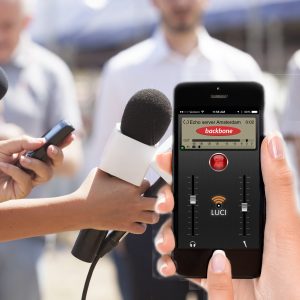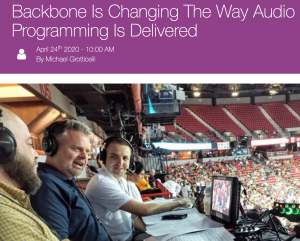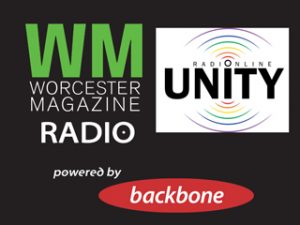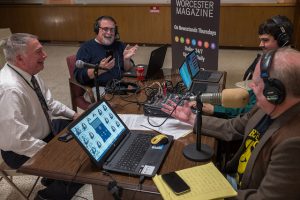How do you pop up a radio station virtually overnight to fight a deadly pandemic? Ask Bill Trifero who assembled an all-volunteer army of professionals and a few companies like Backbone and Technical del Arte to chip in state-of-the-art technology. He reports how it came about in Radio World
For the past four months, it’s been our honor to work with Bill on tackling this crisis with  24/7 radio coverage. Equipped with just smartphones, laptops, and Backbone Production Suite, which includes LUCI Global, operating in the cloud, the station was up and running in a matter of a hours and days instead of weeks and months.
24/7 radio coverage. Equipped with just smartphones, laptops, and Backbone Production Suite, which includes LUCI Global, operating in the cloud, the station was up and running in a matter of a hours and days instead of weeks and months.
Multiple hosts and reporters worked simultaneously, remotely in collaborative broadcasts, without having to buy or borrow many thousands of dollars in hardware. Virtually, every function an agile radio station needs to operate, including phones and terrestrial program syndication to their participating local station, was at their disposal. This is how the cloud can work magic, and Backbone is proud to have been there to help.
Read more in Radio World






 Prolific radio industry programming and management executive David Bernstein has been named general manager of TalkersRadio, the online experimental talk radio station being developed by TALKERS magazine for launch in mid-August. Bernstein, a leading talk industry consultant and talent coach, has served as PD, OM or GM of such heritage stations as WOR, New York; WRKO, WBZ, and WAAF, Boston; WTIC, Hartford; WPRO, Providence; and KVON, Napa/San Francisco among others as well as VP/programming of Air America.
Prolific radio industry programming and management executive David Bernstein has been named general manager of TalkersRadio, the online experimental talk radio station being developed by TALKERS magazine for launch in mid-August. Bernstein, a leading talk industry consultant and talent coach, has served as PD, OM or GM of such heritage stations as WOR, New York; WRKO, WBZ, and WAAF, Boston; WTIC, Hartford; WPRO, Providence; and KVON, Napa/San Francisco among others as well as VP/programming of Air America. TalkersRadio will operate as a 24/7/365 streaming station located on the TALKERS website (
TalkersRadio will operate as a 24/7/365 streaming station located on the TALKERS website ( On announcing the appointment, TALKERS publisher Michael Harrison states, “The acquisition of the full time services of David Bernstein is a major coup for us – one that we have been working on for almost a year, while he’s been finishing up a number of projects for which he was responsible as president of Bernstein Talent. I have known David for almost 25 years and consider him to be one of the most intelligent, creative, versatile and talent-friendly radio managers I have ever met. He is a man of vision and integrity. All of us at TALKERS are absolutely delighted!” Bernstein states, “This is a radio ‘dream job’ and I am enthusiastic beyond words about the challenge ahead whereby I can hopefully be part of an initiative that will ‘make a difference’ in the radio business.” His responsibilities in the new position include scouting, recruiting and developing talent for TalkersRadio as well as advising its day-to-day operations and entering into strategic partnerships with other broadcasting operations. He states, “We will be developing
On announcing the appointment, TALKERS publisher Michael Harrison states, “The acquisition of the full time services of David Bernstein is a major coup for us – one that we have been working on for almost a year, while he’s been finishing up a number of projects for which he was responsible as president of Bernstein Talent. I have known David for almost 25 years and consider him to be one of the most intelligent, creative, versatile and talent-friendly radio managers I have ever met. He is a man of vision and integrity. All of us at TALKERS are absolutely delighted!” Bernstein states, “This is a radio ‘dream job’ and I am enthusiastic beyond words about the challenge ahead whereby I can hopefully be part of an initiative that will ‘make a difference’ in the radio business.” His responsibilities in the new position include scouting, recruiting and developing talent for TalkersRadio as well as advising its day-to-day operations and entering into strategic partnerships with other broadcasting operations. He states, “We will be developing 


